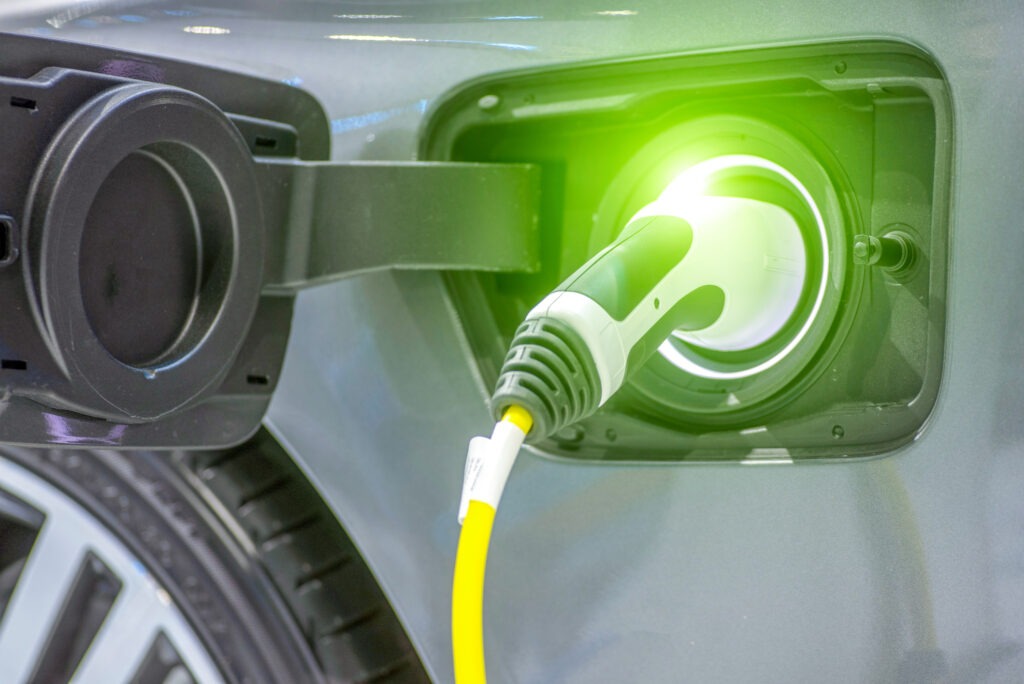Big boost for Chinese EV market as BYD maintains command in May
10 July 2024

Electric vehicle (EV) registrations in China climbed by a third in May as BYD continued to control the market. José Pontes, data director at EV Volumes, considers the results with Autovista24 editor Tom Geggus.
Combining battery-electric vehicles (BEVs) and plug-in hybrids (PHEVs) figures, a total of 816,875 EVs were registered in China in May. The plug-in market therefore grew by 33% year on year.
BEV deliveries increased by 22% in the month while PHEVs climbed even faster, up by 55%. In terms of volume, all-electric vehicles represented 63% of EV sales in China, below the 64% average for the year so far.
EVs took a 47.2% share of China’s total new-car market in May, with BEVs alone making up 29.4%. This was a sizeable gain on the 35% recorded by EVs in May 2023. BEVs accounted for 24% at this point, revealing decent growth. PHEVs did even better, rising from a market share of 11% to 18% in May 2024.
In the first five months of this year, more than 3.3 million vehicles were sold in China. This is a significant gain over the 2.5 million units recorded in the same period of 2023. Between January and May EVs accounted for 41.1% of the country’s new-car market, with BEVs making up 26.4% alone.
Highlighting the strength of the EV industry in the country, the top three spots across China’s entire new-car market were all claimed by the technology. This was replicated across all vehicle segments except the C-segment, where ICE models still have a strong presence.
The best-selling internal-combustion engine (ICE) model was the fifth-place Nissan Sylphy with 31,600 sales. Benefitting from its pricing strategy, BYD put five models in the overall top 10. This is putting pressure not just on ICE powertrains, but also its plug-in competitors.
Continued success for BYD Song
The BYD Song was the uncontested leader of the Chinese automotive market in May. It recorded 55,552 registrations, with 12,822 units belonging to the BEV version. Whether the model can retain this leadership position will depend on its competition, particularly from inside BYD itself.
The model could be challenged by its stablemates, the Song L, the Sea Lion 07 and the Denza N7. This is likely to be too much competition inside BYD’s midsize SUV portfolio for the Song to keep posting around 50,000 sales a month. This is the necessary threshold to maintain leadership of the competitive Chinese market. However, the Song is likely to keep benefitting from price cuts in the immediate term.
In second, the BYD Qin has been a steadfast model for the Chinese brand for some time. The midsize sedan reached 48,668 registrations in May, with 17,100 BEV versions.
Now starting at ¥80,000 (€10,160), the model has benefitted from BYD’s price cuts and demand is likely to stay high. The model is likely to maintain its market position despite fierce competition from both internal and external sources.
The Tesla Model Y came third in China in May with 39,985 registrations. Sales of the model can be expected to peak at around 50,000 units in June. While this will not make it the market’s best-seller, it will mean continued relevance for the BEV in China. This is no small feat, considering current market trends have made this the only foreign model in May’s top 20.
BYD builds higher
In fourth, the BYD Seagull recorded 33,544 registrations. With some production now diverted to export markets, it seems demand for the model is remaining steady in China. But even with focus drawn to locations like Latin America and Asia-Pacific, the BEV should remain in China’s top 10.
There is also potential for the Seagull to be launched in Europe in the second half of the year as the Dolphin Mini. However, the same low prices featured in China cannot be expected to be exported with the model, especially with the deployment of provisional tariffs.
In fifth, the BYD Destroyer 05 demonstrated how price cuts can help volumes, with a record 24,690 sales in May. This meant BYD claimed first and second place in the midsize sedan category. Sales of the Destroyer 05 could suffer with the launch of the BYD Seal 06 PHEV. This model is not much bigger and has a more attractive design, especially inside.
BYD claimed six of the top seven spots in May. Looking across the entire chart, eight models from the brand appeared in the top 20 in the month. This climbs to nine when including the premium-brand Denza D9.
There is the potential for a shake-up in the BYD standings, with the carmaker preparing to launch several new models. All have the potential to become best-sellers, and will likely cannibalise BYD’s existing lineup, while also disrupting competitors.
A successful entry
The Aito M9 joined the table in May, jumping to eighth with a record 16,462 sales, of which 1,738 belonged to the BEV version. The M9 is the carmaker’s most recent model and can be expected to become a frequent presence in the top 20.
In 11th, the Tesla Model 3 had a good May with 15,230 sales. This successfully disrupts a trend of bad months for the BEV. Meanwhile, the Zeekr 001 came 13th with 13,480 sales, its best-ever result. The carmaker’s flagship model is taking full advantage of its recent refresh.
The new Li Auto L6 had its first full month on the market, securing 14th place with 12,965 sales. It is likely to join the top 10 soon, but questions remain over whether it will break through BYD and Tesla’s ranks.
New faces and records
Records were also posted outside of the top 20. Changan’s new EV brand, Qiyuan, saw its A07 sedan reach a best-ever tally of 5,774 sales in My. Nio’s ET5, reached 7,282 sales, its best score in the last 17 months.
Luxeed, the result of cooperation between Huawei and Chery, also continued to expand its market presence. Its S7 sedan reached 5,021 sales in May, a new record. The Aito M5 saw registrations reach 5,583 in May, the model’s best result since December 2022.
Leapmotor’s C10 scored 5,411 sales in May. Set to be the brand’s best-seller in China, the model was developed with overseas markets in mind. With the company’s recent association with Stellantis now coming to fruition, the crossover can be expected to land in Europe this year.
Finally, the Xiaomi SU7 has locked in some 100,000 orders, which the brand aims to fulfil this year. So, in only its second month on the market, the model recorded 8,646 registrations in May. With an SUV version due in 2025 and a smaller, more affordable model set to land the year after, Xiaomi could be a disruptive market force.
The year so far
In the first five months of the year, the top of the EV model table remained relatively static. The BYD Song, BYD Qin Plus, and Tesla Model Y held on to the first three positions respectively.
The same goes for the BYD Seagull in fourth, which secured a 30,000-unit lead over the fifth-place BYD Yuan Plus. However, it was also some 30,000 units behind the Model Y.
Due to a bad May for the Aito M7, the BYD Yuan Plus took fifth place. This may not be the end of the M7’s troubles as the rising BYD Destroyer 05 jumped two positions in the month to seventh. This puts it only 12,000 units behind the Aito.
The Aion Y climbed three positions to 11th place, with the model looking to join the top half of the table in June. Further down, the Tesla Model 3 climbed two positions to 14th. Then, the Aito M9 joined the top 20 in 18th, with the 17th-place BYD Tang just 2,000 units ahead.
BYD holds on to crown
In terms of brands, BYD held on to first place with 29.7% of the Chinese market between January and May. This is a commanding performance, well ahead of Tesla, which clung on to second with 6.6% of the market, up from 6.5% in April.
Dropping 0.2 percentage points (pp) to a 5.1% share, third-place Wuling saw its competition draw closer. SAIC’s low-cost brand looks to be suffering at the hands of BYD’s price cuts. Geely also felt this impact, as its share fell from 4.6% to 4.4%, meaning it lost fourth place.
Thanks to the Aito M9’s positive results, the carmaker overtook Geely to take fourth, claiming 4.5% of the Chinese market. Outside of the top five, Li Auto gained 0.1pp, totalling a 4.3% share. With the recent launch of the L6, it could soon surpass Aito, before aiming at third place.
With brands banded together under OEM groups, BYD continued to lead comfortably with 31.9% of the market. This was thanks to the strong results of its namesake brand, as well as its premium offerings, Denza, Fang Cheng Bao, and Yangwang.
Geely–Volvo was a distant runner-up with an 8.3% share, having gained a little ground over SAIC, which ended May in third with 7.7%. However, both lost shares last month as a result of BYD’s pricing strategy. In fourth, Tesla took a 6.6% share, giving it a small advantage over Changan in fifth with 6.5%.



